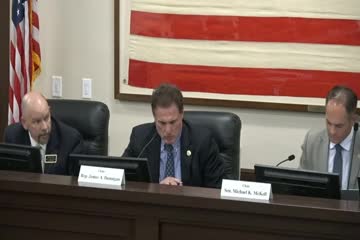Cities race to implement ambitious station area plans
September 18, 2024 | Utah Interim, Utah Legislative Branch, Utah
This article was created by AI summarizing key points discussed. AI makes mistakes, so for full details and context, please refer to the video of the full meeting. Please report any errors so we can fix them. Report an error »

In a recent government meeting, officials from the Wasatch Front Regional Council (WFRC) provided an update on the implementation of station area plans mandated by House Bill 462, passed during the 2022 legislative session. This law requires municipalities with fixed guideway transit stations to develop comprehensive plans that align with their general plans and zoning regulations.
Andrew Gruber, executive director of WFRC, emphasized the importance of these plans in addressing Utah's rapid population growth, projected to reach 5 million by 2050. He noted that the station area planning initiative is a critical component of a multifaceted strategy to enhance housing availability and affordability while maintaining quality of life. The plans aim to create walkable community centers around transit stations, facilitating a mix of housing types and reducing reliance on personal vehicles.
The legislation outlines specific objectives, including increasing housing availability, promoting sustainable environmental practices, and enhancing transportation options. Local governments are tasked with evaluating areas within a half-mile radius of rail stations and a quarter-mile radius of bus rapid transit stations to identify opportunities for development.
As of now, 65 out of the 71 required station area plans are either underway or completed, with a deadline set for the end of 2025. The WFRC has allocated $5 million for technical assistance to help cities develop these plans, with over half of the funds already utilized. Notable examples of progress include ambitious plans in American Fork, West Jordan, and Clearfield, which collectively aim to add thousands of new housing units.
The meeting also addressed questions regarding the definition of bus rapid transit stations and the flexibility of the law concerning existing developments, such as single-family neighborhoods and golf courses. Officials clarified that the law does not mandate changes to stable areas but encourages local governments to identify regions suitable for redevelopment.
Overall, the station area planning initiative is seen as a vital step in managing Utah's growth sustainably, providing residents with diverse housing options, and preserving open spaces. The WFRC and the Mountain Land Association of Governments continue to work collaboratively with local communities to ensure the successful implementation of these plans.
Andrew Gruber, executive director of WFRC, emphasized the importance of these plans in addressing Utah's rapid population growth, projected to reach 5 million by 2050. He noted that the station area planning initiative is a critical component of a multifaceted strategy to enhance housing availability and affordability while maintaining quality of life. The plans aim to create walkable community centers around transit stations, facilitating a mix of housing types and reducing reliance on personal vehicles.
The legislation outlines specific objectives, including increasing housing availability, promoting sustainable environmental practices, and enhancing transportation options. Local governments are tasked with evaluating areas within a half-mile radius of rail stations and a quarter-mile radius of bus rapid transit stations to identify opportunities for development.
As of now, 65 out of the 71 required station area plans are either underway or completed, with a deadline set for the end of 2025. The WFRC has allocated $5 million for technical assistance to help cities develop these plans, with over half of the funds already utilized. Notable examples of progress include ambitious plans in American Fork, West Jordan, and Clearfield, which collectively aim to add thousands of new housing units.
The meeting also addressed questions regarding the definition of bus rapid transit stations and the flexibility of the law concerning existing developments, such as single-family neighborhoods and golf courses. Officials clarified that the law does not mandate changes to stable areas but encourages local governments to identify regions suitable for redevelopment.
Overall, the station area planning initiative is seen as a vital step in managing Utah's growth sustainably, providing residents with diverse housing options, and preserving open spaces. The WFRC and the Mountain Land Association of Governments continue to work collaboratively with local communities to ensure the successful implementation of these plans.
View full meeting
This article is based on a recent meeting—watch the full video and explore the complete transcript for deeper insights into the discussion.
View full meeting

